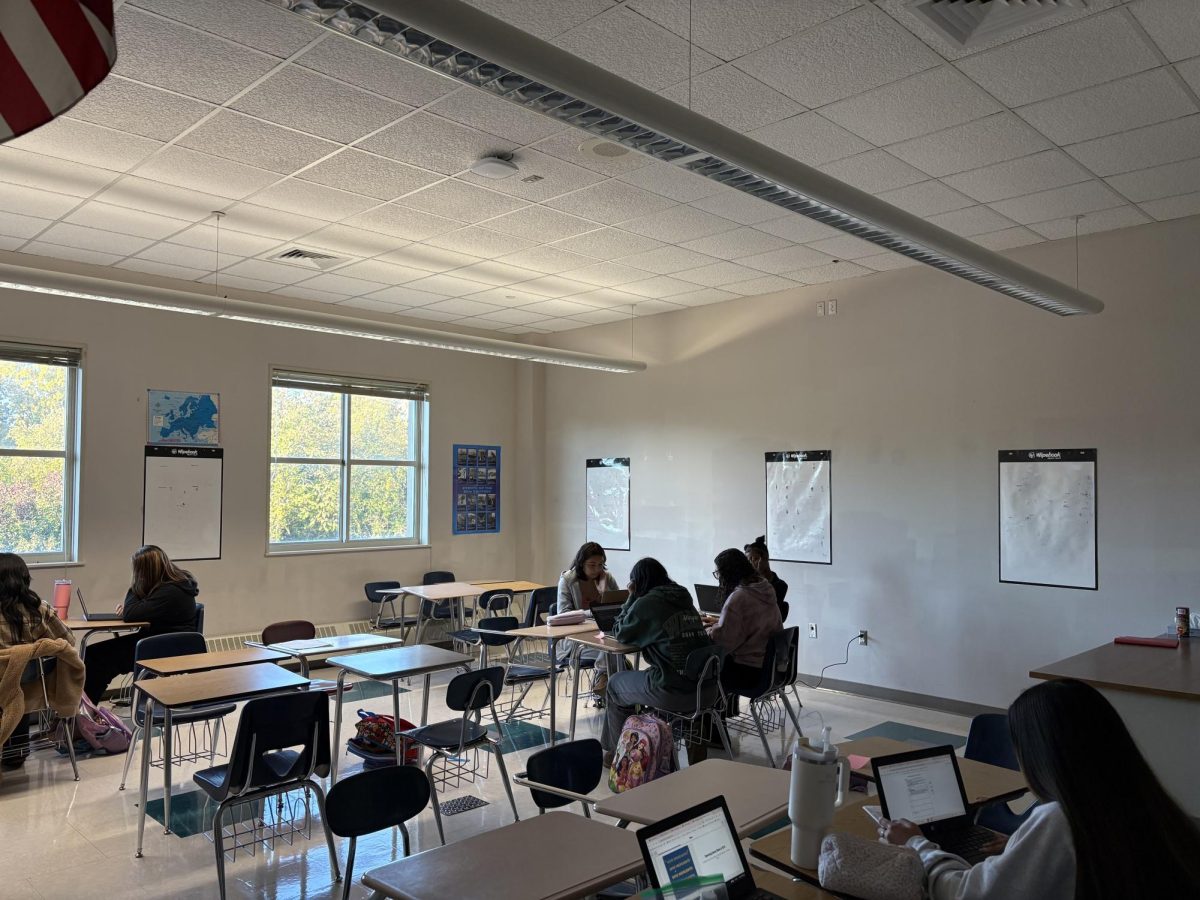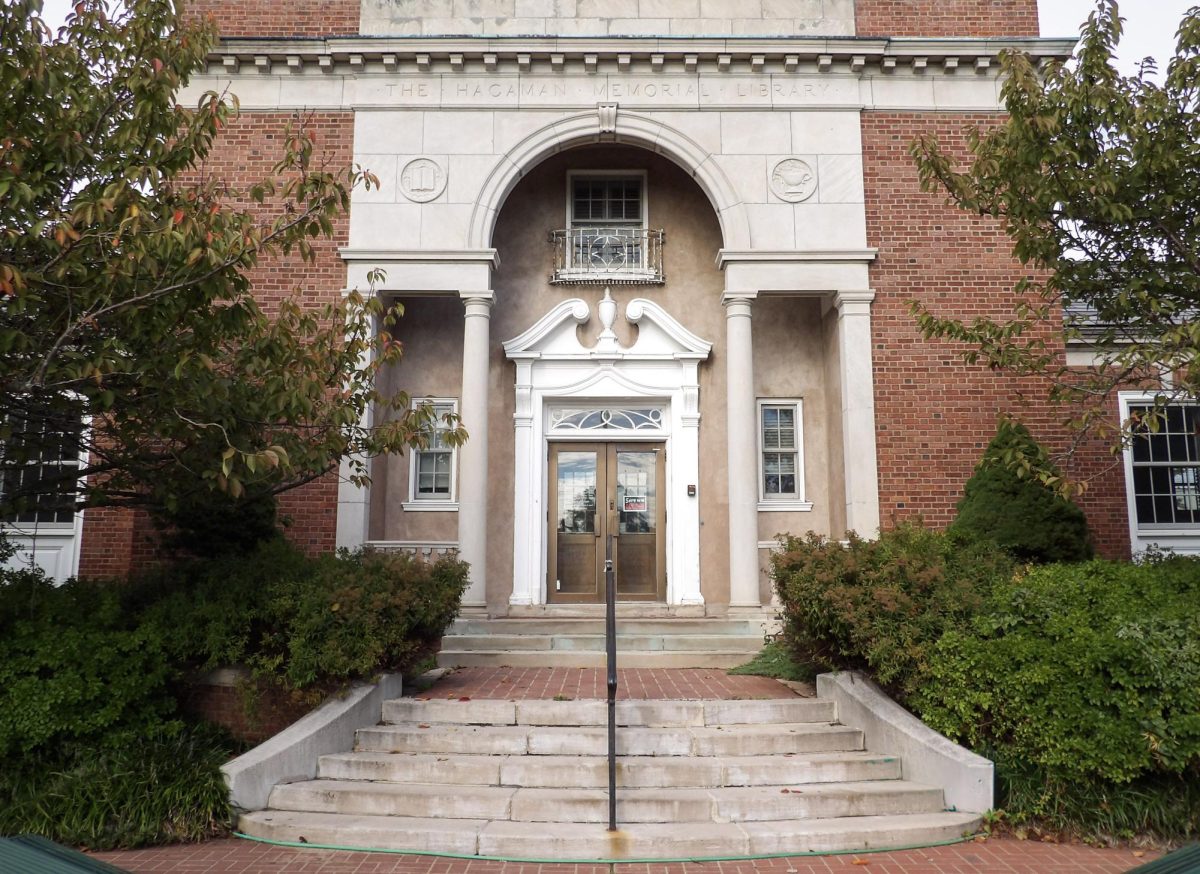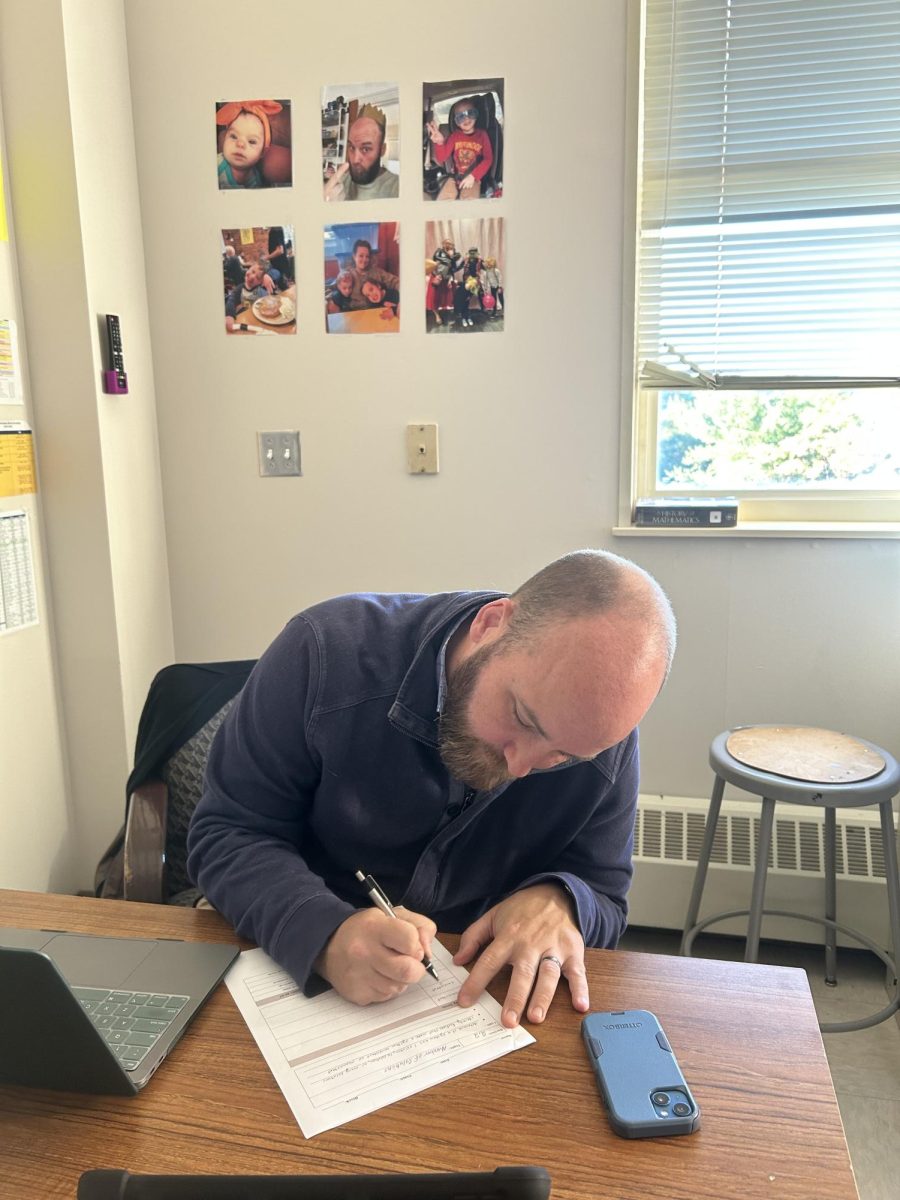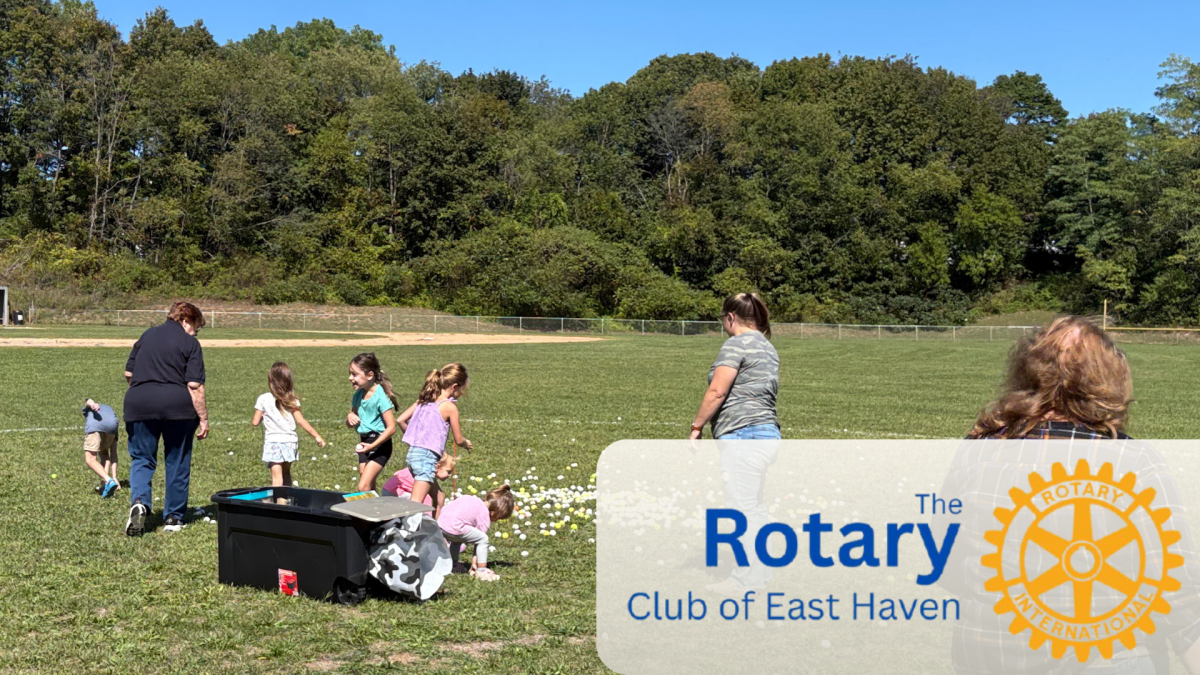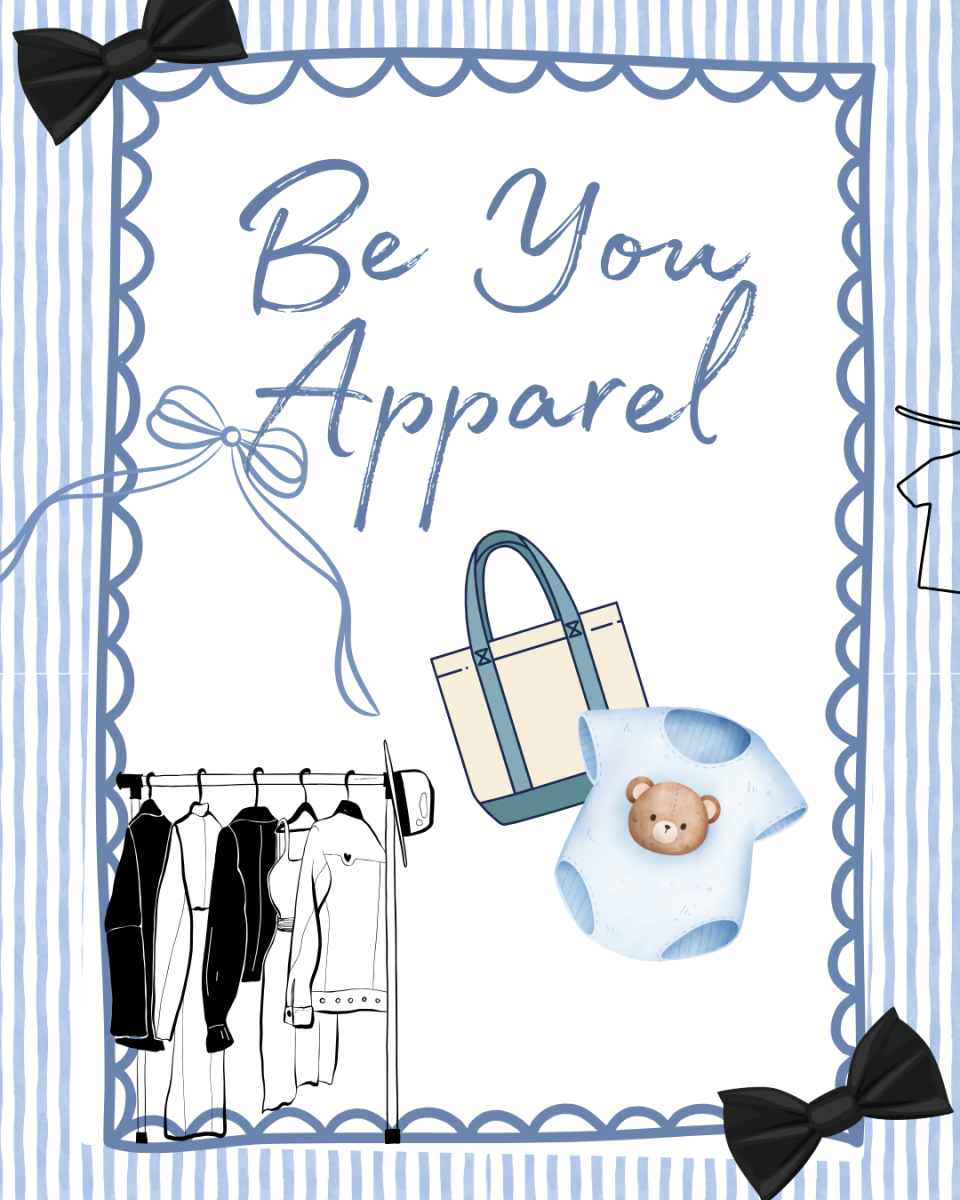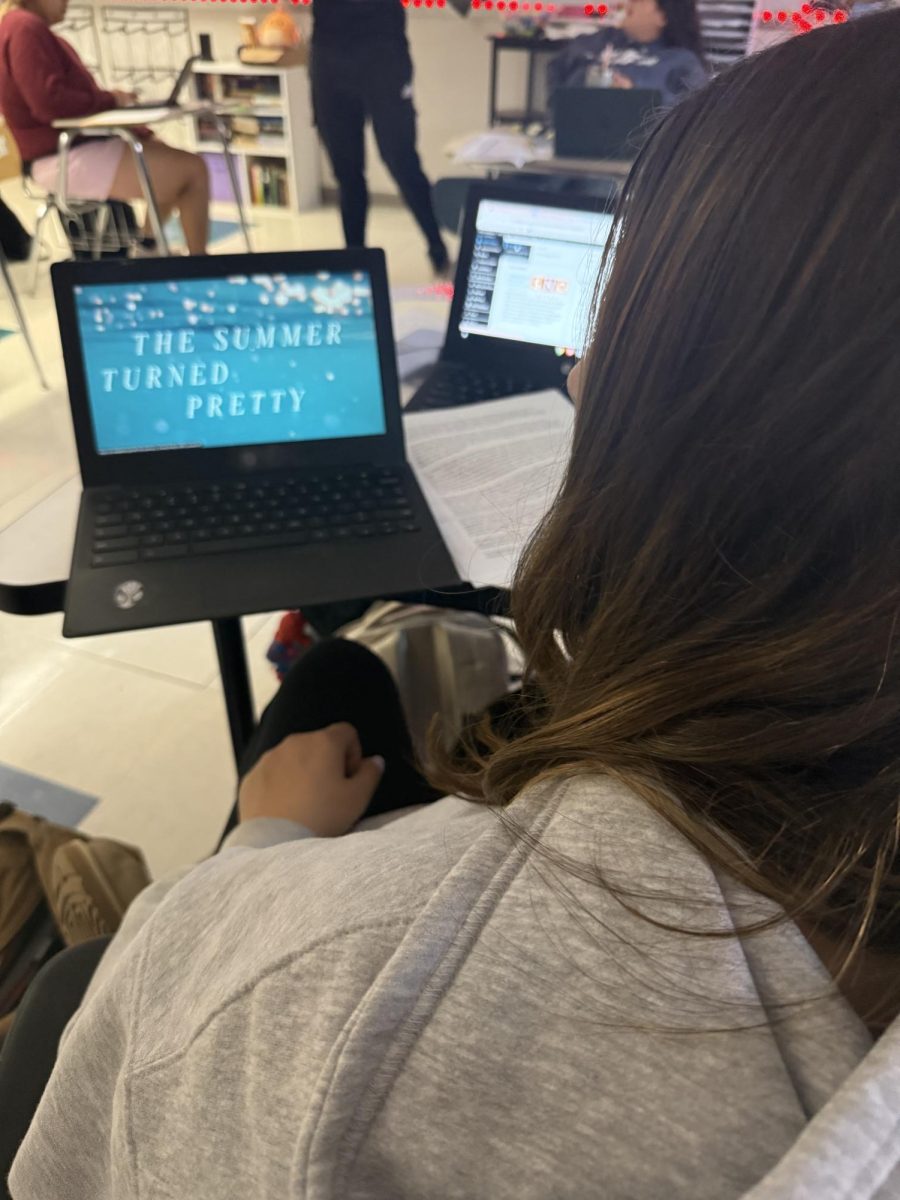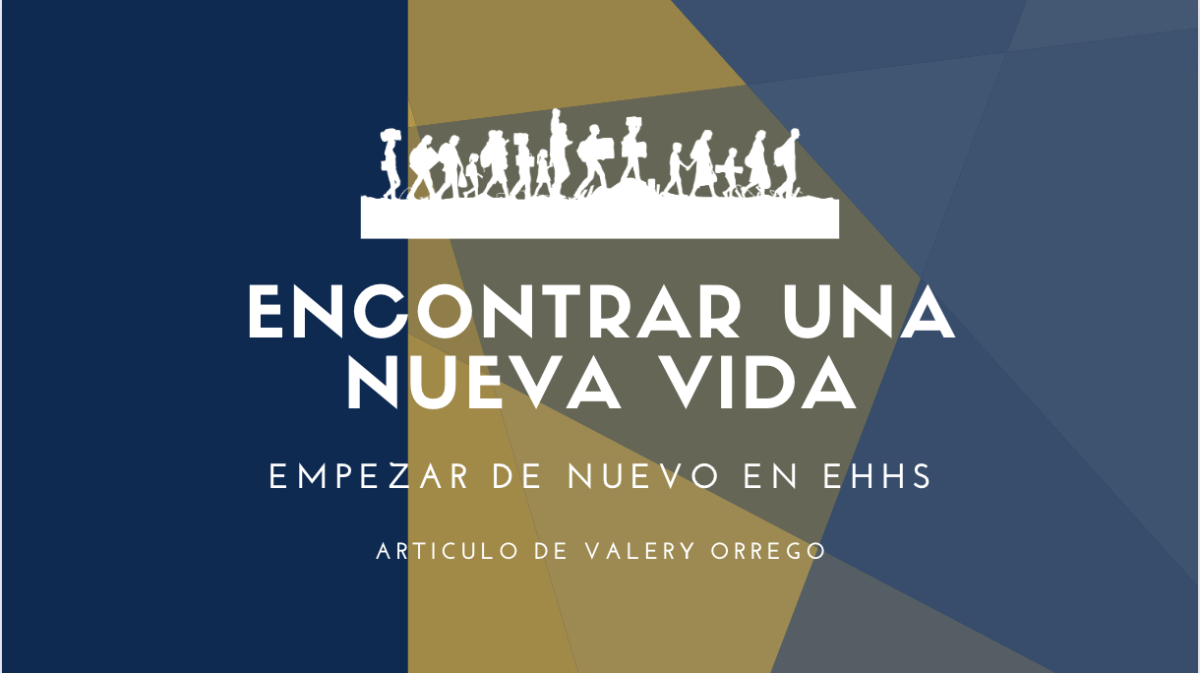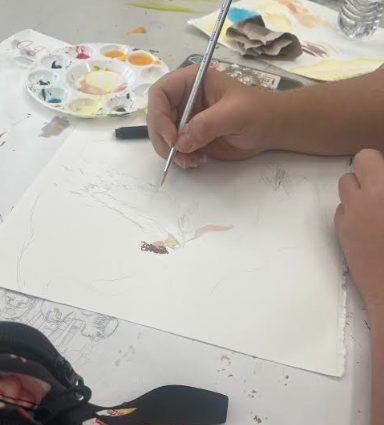EHHS students experience the benefits and struggles of expressing themselves through art every day. Learning about our art students on a deeper level, and how their mental health associates with art, helps break stereotypes, and highlight talent across the EHHS student body. Art can help improve three main components of your everyday life such as academics, mental health, and physical health by helping concentration, mood, and blood flow. All teens participate in art every day, and learning how to reap the benefits from that can help improve our learning environment, and personal lives. Insight from art teachers, Mrs. Mindy Parisi and Mr. Matthew Stevens, helps grasp how the art programs here at EHHS help students in their journey to discovering themselves through art. Mr. Stevens has been teaching art for 21 years, and teaches classes such as art, illustration, design, and ECE drawing. Mrs. Parisi has been teaching for 19 years and teaches Digital Photography and Fashion.
What is Art?
Many people, such as Mrs. Parisi and Mr. Stevens, would describe art as self expression. Mrs. Parisi says “ art is self expression, it doesn’t have to be beautiful, anything original is art.” Though The Oxford Dictionary defines art as “ forms such as painting or sculpting,” anything that one creates as a form of expression is art in society’s view. AI, fashion, drawing, photography, painting, music, writing, and millions of other forms of expression are forms of art that reap the benefits of research based proof of how art impacts teenage minds. Society has often defined art as a physical piece, but the definition of art is different for everyone, as every person has a different view on art they consume.
Academic Success
A variety of experiments and research has been done on the impact of art on teenage minds. Stanford conducted a 10 year study that looked at the relationship between students involved in art programs, and their success in school. This study shows how a student involved in an art program is 4 times more likely to win an academic award than someone who doesn’t participate in any art programs. This is because of the way that art helps students process and retain information in the brain. Art activates the same part of the brain that learning does when you’re working in class, which allows for students to process what they are learning in school better through their preferred form of art. Art is also helpful for students because it allows for the brain to easily visualize things that they are learning. They can work through, and process the work they have to learn, which allows them to remember and understand it much better than someone who doesn’t participate in any art. Mr. Matthew Stevens shares his first hand experience explaining how art is creative problem solving, meaning that art helps enhance your problem solving abilities in other forms as well. The thought process in your brain that goes on while doing art, helps improve problem solving skills that you use in jobs, school, and everyday life. The benefits of art go beyond the creation and satisfaction of a piece that you made.
EHHS student, Nicholas Cinquino, brings another perspective to the impact of art in academic situations. He explains first hand how when school is stressful with hard classes, or an abundance of work, he turns to art to relieve that stress that bothers him throughout the day. For many people like Nicholas, art can be an outlet to take yourself out of the present moment, and can allow your body time to bounce back into the stressful environment that is school, which improves the quality of work you turn in.
Mental Health
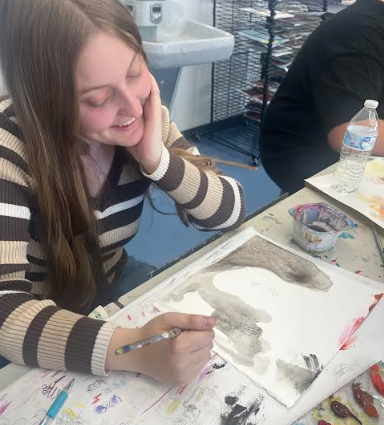
For many students, mental health is a big struggle in their daily lives, and art is one way to help process emotions, escape your thoughts, and express what you feel. Art therapy, for example, helps reduce stress, anxiety, and depression, which, in return, helps optimism carry throughout your day. This is because art allows for teens to focus on more than just the present, and rather on a brighter future and better times. Traditional art therapy is not the only way to get these benefits, as participating in any form of art on your own time also helps create these results for teens. Another benefit of creating art is boosting self confidence for teens, as well as gaining a sense of control over their own life. People are able to work through their emotions, and express them, when they can’t express them through words, which allows them to have more control over their confusing thoughts.
EHHS senior, Kimberly Carrara, speaks on her experiences in numerous art programs over her years at EHHS. She explains how art can be very rewarding, but also a challenge as well. “Of course, there are negatives too. When you care about something a lot, messing up can make you disappointed in yourself. Like, if a football player doesn’t catch some game-winning throw, it’s likely that they’ll be upset, and the same goes for performing. Messing something up in a performance after all the practice you put into it can be so upsetting, and sometimes it can even impact your self worth.” For many students, disappointments associated with things they have worked hard on, as well as projects they care about can be a challenge to their mental health. So, while art can have many positive impacts on people in terms of mental health, it can also hurt mental health if your mindset sways your feelings that way.
Physical Health
Art styles such as dance, music, singing, cooking and performing are all physical forms of art that get your body moving, and your blood flowing. Creating art through activities helps improve oxygen in your blood, which helps cognitive performance, and helps with the analyzation of information. Physical exercise through art also helps retention in long-term memory, which helps when learning new ideas in school, as well as improves personal life. Physical activity through art can help you learn better, and make life easier far beyond the performance.
Art consumption
A benefit of consuming art as a teenager is through the diverse perspectives and glimpses into artists’ minds when looking at their art pieces. For example, if a student is struggling with a relationship, a piece of art that may convey those same feelings they are feeling can help the student cope with their inner thoughts. Art can help all people work through confused thoughts just by looking at a piece. Art is a vital form of communication to show perspectives of people’s lives.
Mrs. Parisi explains that art is created to get a reaction out of someone, whether that be good or bad. She explains how there is an art piece in the Yale University Art Gallery that features a shovel that someone had bought at the store, and hung amongst time consuming paintings, drawings, and sculptures. This angle of art is to evoke emotion in the viewer, which allows for the viewer to create opinions, and process different angles of how someone can create art.
Mrs. Parisi has been teaching visual arts for a very long time and speaks on her experience when seeing students create art in her classroom. From preschool all the way to high school, she has noticed that when her students paint in her classes, she notices that the environment seems to calm down, which in return allows for a more comfortable learning environment. Almost every time they start to paint, the volume in the classroom quiets, because the students are so focused on their piece. Art is a tool that helps people set themselves apart from others in a time of AI, and computer based jobs taking over. Art can not yet be replaced by robots, which means that creation is the essence of humanity.


